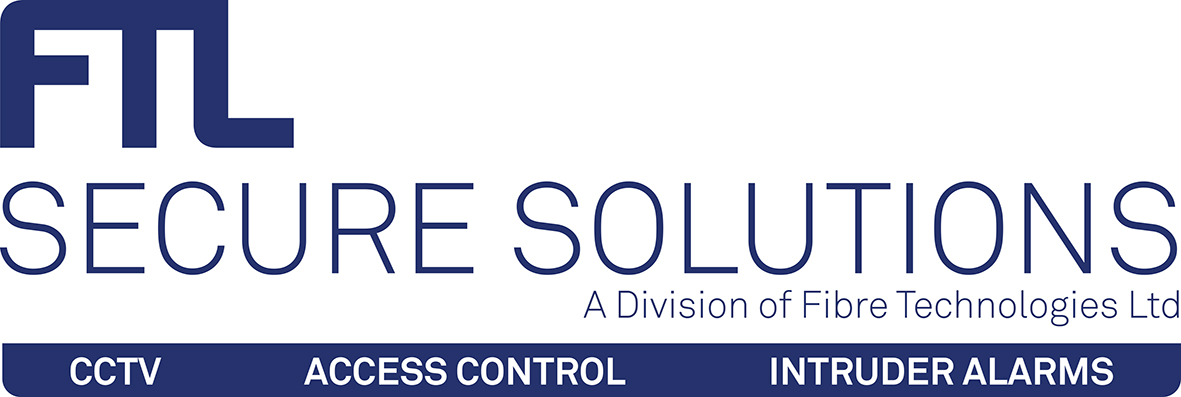Access Control vs. Security Systems: Which is Right for You
Securing your business is a top priority, but choosing the right systems can be confusing. Access control and security systems serve related but distinct purposes for protecting assets. I’ll explain the key capabilities of each and discuss the pros and cons of access control systems versus security systems. Comparing features side-by-side will help you determine which approach may work best to meet your needs and budget.
Access Control Systems
What are Access Control Systems?
Access control systems regulate access into and within facilities. They determine who is allowed to enter restricted areas and when. These systems grant access when credentials are presented, like an access code, keycard, or biometric verification. Access control includes physical barriers like doors, turnstiles, and mantraps integrated with readers and electrified locks.
There are several types of access control systems:
- Keypads: require entering a PIN code or password. Simple, cost-effective keypad systems work for low-risk, small scale access control.
- Card readers: read data embedded on ID/smart cards. Various card technologies range from proximity cards to contactless smart cards. Card access systems are scalable for large facilities.
- Biometric scanners: validate physical attributes like fingerprints or iris patterns instead of keys or cards. Highly secure for high-risk areas but more complex systems.
- Phone or app-based access: uses smartphones instead of physical credentials. Convenient but security relies on the device.
- Intercoms: use audio and video communication for access decisions. A guard can visually verify visitors before unlocking doors remotely via intercoms. Appropriate for reception areas.
Pros and Cons of Access Control Systems
| Pros | Cons |
| More convenient than keys: Shared access cards or codes are simpler to manage than making copies of metal keys. If an employee leaves, cards and codes are easily deactivated. | Upfront cost for hardware/installation: Doors, readers, controllers and electrified locking hardware plus installation and configuration has a considerable upfront price. Not as inexpensive as some keypad systems. |
| Provides an access audit trail: Most systems log entry and exit timestamps by user. Reviewing access logs allows monitoring staff movement or tracing unauthorized entries. | Access cards can be shared/lost: Possibility of users sharing cards or failing to report lost cards compromises accountability in logs. Install extra measures like biometric readers to validate identity. |
| Flexible access permissions: Assign specific doors, zones, and times customized to each user rather than total access. Update permissions instantly as needs change. | Limited to securing entry points: Controls access but does not directly monitor for theft, vandalism etc. inside the premises or detect perimeter intruders. Requires integration with intrusion detection for full coverage. |
| Some provide time restrictions: Sytem policies can implement automated time-bound permissions, eg – access only 8 to 5 pm daily, without constant monitoring. |
Security Systems
What are Security Systems?
Security systems detect threats and attempted intrusions instead of only regulating authorized access. Systems like burglar alarms and surveillance cameras alert security staff when a potential criminal threat occurs both inside facilities and outdoor areas. Most security systems involve remote monitoring via phones or internet connectivity.
- Intruder alarms: use sensors on doors/windows to detect break-ins and motion sensors to trigger on unauthorized movement. Control panels activate audible alarms and alert monitoring centers or police upon intrusion detection.
- Surveillance camera systems: consist of cameras providing live and recorded video feeds of premises interiors and exteriors. Analysts monitor feeds and recordings help identify suspects.
Other systems like glass break sensors, barrier beams, and smoke or fire detection may connect as well into overall premises monitoring by security staff.
Pros and Cons of Security Systems
| Pros | Cons |
| Deter burglaries and thefts: Visible warning signage combined with intrusion sensors and audible alarms discourage criminals. Fast police response increases risk of getting caught. | Recurring monitoring fees: Professionally monitored systems require an ongoing monthly rate per location, typically $30-50 monthly. Upkeep costs are higher than unmonitored systems. |
| Help identify and catch intruders: Recorded CCTV footage aids identifying burglars or vandals. Seeing faces aids police investigations and arrests. | False alarms common with intruder systems: Motion sensors and perimeter detection can be triggered unintentionally by pets, debris and weather causing unnecessary dispatches. Fine tuning sensor sensitivity helps avoid this. |
| Surveillance footage aids investigations: If a crime does occur, camera footage provides valuable investigative context about what happened before, during and after incidents. | Upfront costs can be high: Major camera and alarm system installations get expensive quickly. Restricting initially to high priority areas minimizes costs. Also factor in electrical and WiFi infrastructure needs. |
| Many options for monitoring: Self-monitoring, remote monitoring companies or direct connection to emergency responders ensure alarms get proper responses. Customizable to needs and budget constraints. |
Comparison of Access Control vs. Security
While both systems enhance protection, there are some trade-offs between access control and security to factor in depending on your facility layout and particular risks.
Convenience vs. Intruder Detection
Access control excels at easily managing staff or visitor entry permissions without needing constant oversight. But access systems alone will not detect unauthorized entries or criminal behaviors occurring on premises. Integration with intrusion alarms or surveillance systems is ideal for a full protective solution.
Access Audit Trails vs. Surveillance Footage
Logs of access scans provide exact entry and exit events by users. However there’s no visibility into what happens after entry. Camera systems provide eyes on the overall premises but limited data about each person coming and going. Using both together gives maximum accountability.
Secure Building Access vs. Entire Premises Monitoring
Access systems inherently focus on entry points – doors, lobbies, parking garages and so on. Whereas CCTV and security sensors can blanket both sensitive indoor zones along with outdoor yards and perimeters around structures. Limited access control may miss threats approaching facilities externally.
Ongoing Costs Differential
Access control systems tend to cost less long term with more affordable maintenance and scalability. Whereas professionally monitored intrusion and surveillance systems require steeper monthly fees but offer 24/7 live oversight and alerts.
Which is Right for Your Business?
With the differences compared, here are key factors to analyze to determine if access control or security systems should take priority for your company.
Factors to Consider
- Building layout and access points. A single door office needs a very different approach than a facility with multiple entryways and zones. Layered access systems suit multifaceted buildings.
- Assets needing protection. High value equipment, data, or hazardous materials justify extra controls like biometrics and surveillance. Know primary risks facing your business.
- Budget constraints. Available capital impacts starting scale and whether professionally monitored systems are affordable long term. Balance protection with sustainability.
- Future flexibility needed. Growing organizations should prioritize modular, scalable systems that accommodate changing needs over time.
When Access Control Works Best
Access systems suit:
- Small offices and retail stores – Keypads or card readers adequately control employee and customer entry at a single or limited entry points without advanced functionality.
- Low risk and internal threats only – If theft or violence risks are minimal, access systems help manage staff permissions without high-security measures.
When Security Systems are Preferable
Security systems are ideal for:
- Warehouses, storage areas – Large spaces with valuable inventory justify camera systems, motion detectors and sensors to detect theft and vandalism across wide areas.
- High-value goods targeted by burglars – External-facing locations containing desirable targets for break-ins warrant layered perimeter and interior intrusion controls.
- Remote monitoring needed – Organizations lacking adequate on-site guard staff need 24/7 monitoring services to respond quickly to alarms and recorded threats.
FAQs
Does access control provide intruder detection?
A: Access systems focus on managing the flow of authorized users. Intrusion detection systems are still needed to alert against unauthorized entries or criminal behaviors. However some access controls integrate the ability to arm and disarm intruder alarms when valid credentials are presented. This automates some monitoring processes.
Do security systems control access?
A: Primarily no – video surveillance alone does not regulate who enters areas. However cameras give insight into visitor identities, at least visually. Authenticating visitors against an access control database provides more reliable tracking than guessing based on CCTV images. There are a few exceptions like intercoms or smart barriers integrated with license plate recognition that can trigger gates and barriers to open or close when approved vehicles approach security checkpoints. But most intrusion and camera systems are more passive, focused on automated threat detection rather than controlling physical access permissions.
Can access control work with security systems?
A: Absolutely. While access control and intrusion detection diverge in some capabilities, integrating the two systems provides more robust functionality. For instance, access systems can arm and disarm alarms when approved staff scan badges so legitimate activity does not trigger constant false alarms. Cameras can also focus specifically on entryways, validating identities against access control logs. Implementing access permissions then further protects surveillance infrastructure from tampering by unauthorized insiders. The total integrated solution expands security management.
Conclusion
Securing facilities introduces complex decisions with many technological options. Access control conveniently manages internal permissions while security systems monitor for external and internal criminal threats. Integrating access management with intrusion and surveillance systems can yield comprehensive protection far beyond the capabilities of any single platform.
I’ve aimed to educate readers on the core features, pros and cons and ideal use cases for access control systems versus security systems. Keep business size, valuables, risks, vulnerabilities and budget in mind as you evaluate alternatives. Layer controls for incremental improvements over time. Neither access nor security should completely lapse as gaps invite incidents. Find the right balance of access management convenience and active threat detection reflecting your situation. And leverage professional guidance from security providers when planning deployments.
With smart planning, you can implement the systems yielding the greatest security ROI for stakeholders without overspending. I hope this overview better informs your crisis prevention plans to keep people and property safe. Reach out anytime if you have additional questions as you evaluate options.















